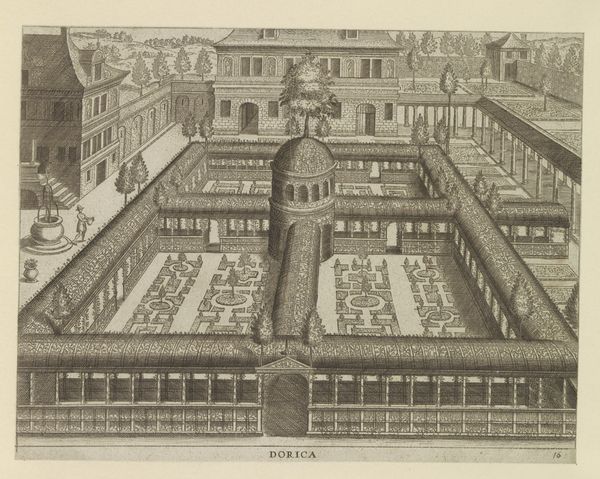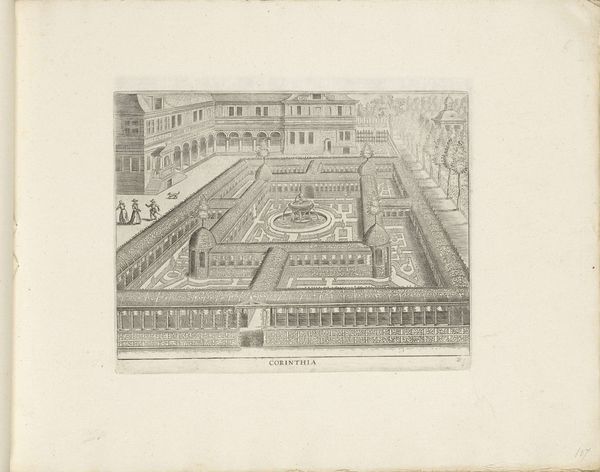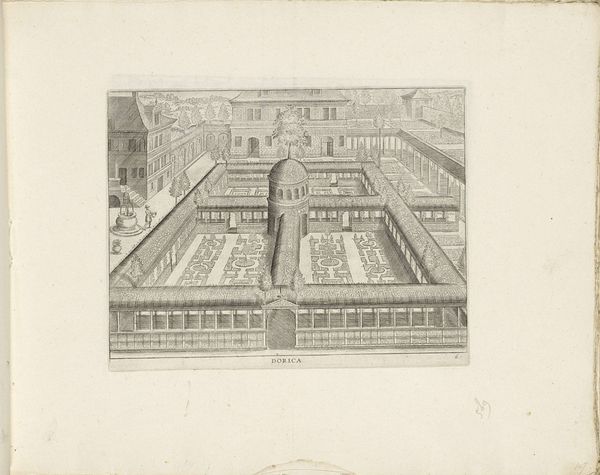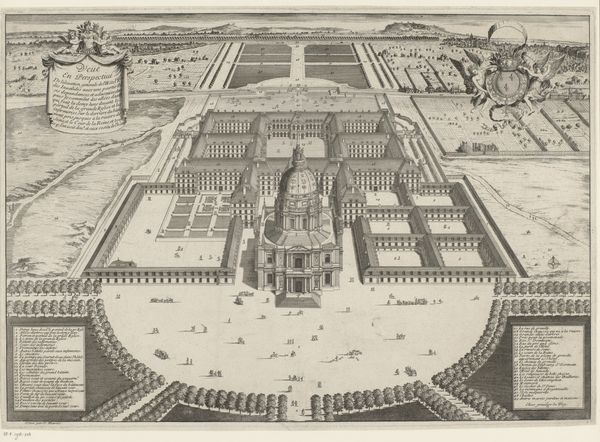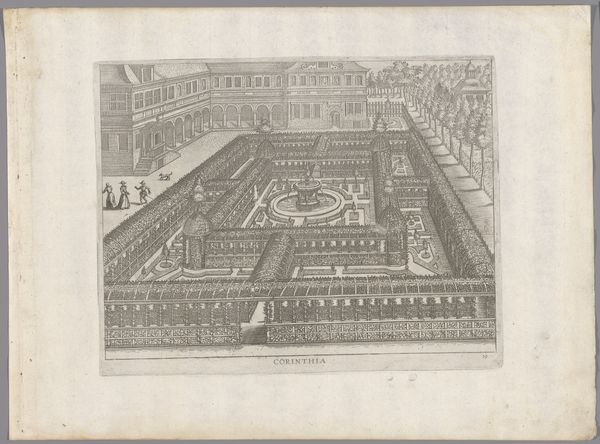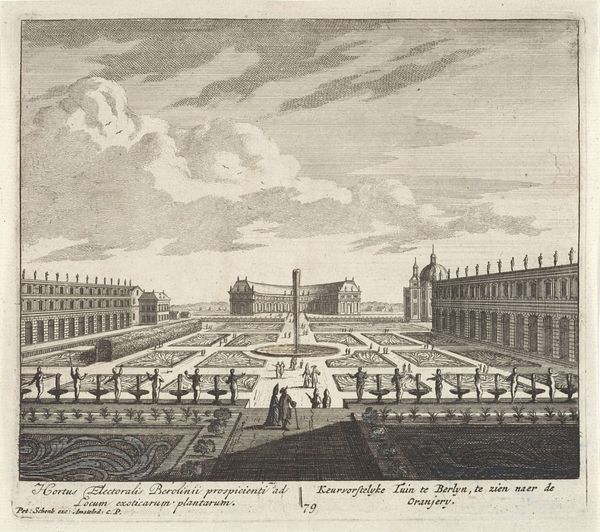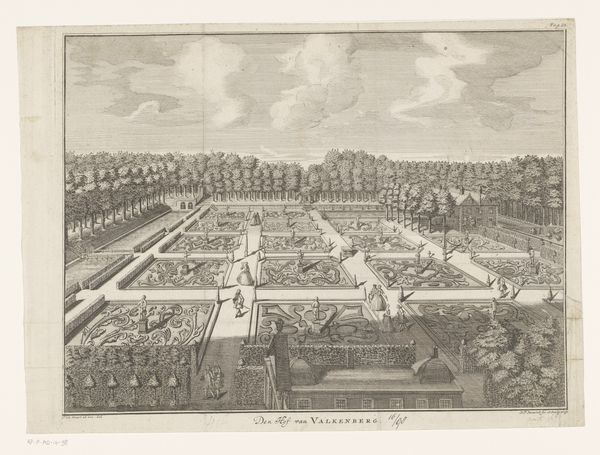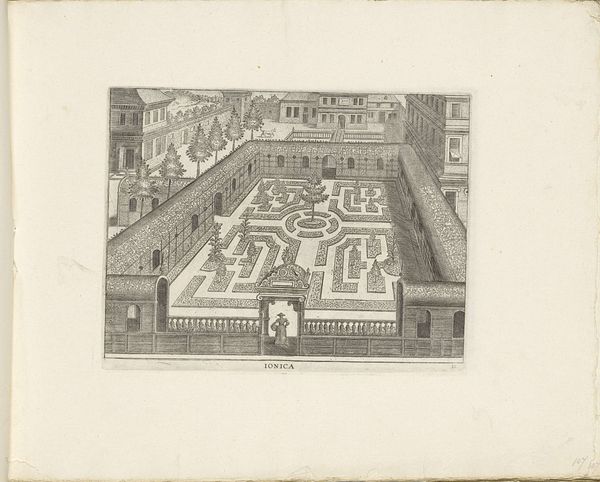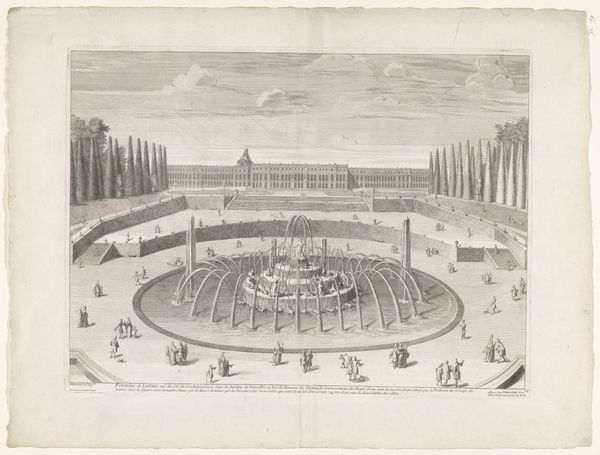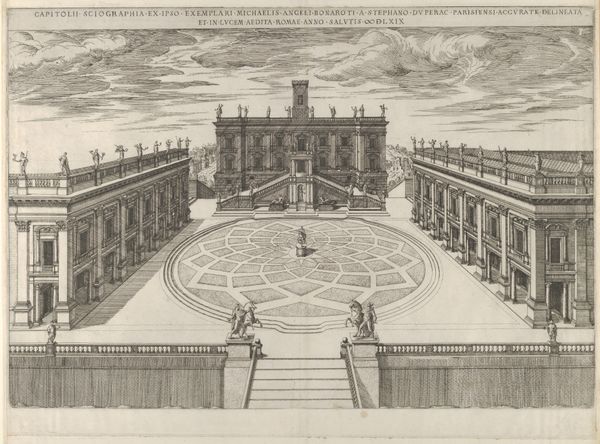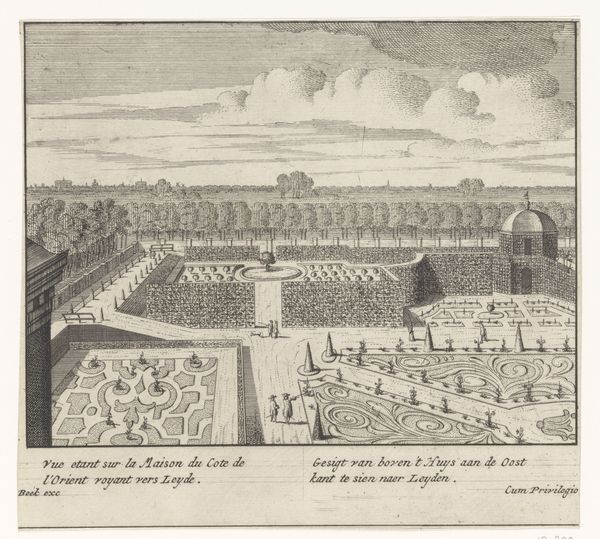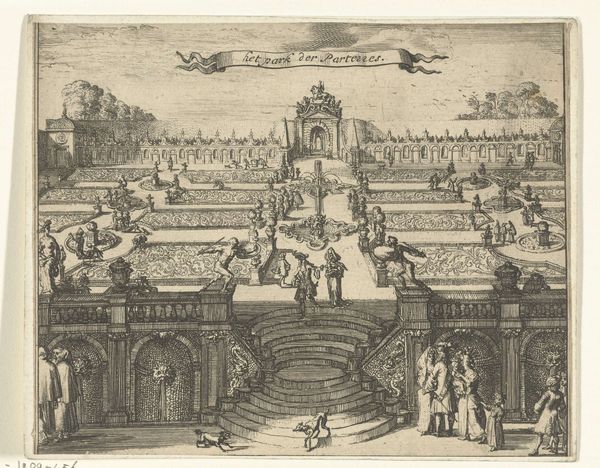
Tuin met een parterre omgeven door een dubbele rij gangen van traliewerk c. 1583 - 1601
0:00
0:00
print, engraving
#
garden
# print
#
landscape
#
11_renaissance
#
geometric
#
engraving
Dimensions: height 188 mm, width 244 mm
Copyright: Rijks Museum: Open Domain
Curator: This engraving, entitled "Tuin met een parterre omgeven door een dubbele rij gangen van traliewerk," roughly translates to "Garden with a parterre surrounded by a double row of trellised corridors." It comes to us from around 1583 to 1601 and is currently held at the Rijksmuseum. The artwork's creator is listed as anonymous. Editor: My initial impression is that it's incredibly ordered, almost rigidly so. The meticulousness of the lines in creating depth is impressive, if not slightly unsettling. It feels more like a designed space than a garden. Curator: Yes, the rigidity speaks to the geometric impulse in Renaissance garden design. The double rows of trellised corridors defining the parterre highlight structure as a conscious choice, rather than simply letting nature dictate form. This is emphasized through the medium of engraving; the clean lines accentuate artificial forms over nature's irregularity. Editor: Looking closely at the details, I’m struck by the sheer labor that went into crafting the garden and representing it. Every single line signifies someone's precise cut on the copper plate and by extension an intense amount of upkeep in creating and managing the plant material within the garden's confines. It is so obviously someone’s status being meticulously labored into reality and captured here through printmaking. Curator: Indeed. The meticulous detail mirrors the hierarchical control exerted over the natural world by those who commissioned such gardens. Consider the function of the central fountain, a visual focal point and symbolic source of life, carefully contained and orchestrated within the broader spatial arrangement. The structure imposes a strict framework upon organic development. Editor: The contrast of the built structure and what it aims to confine speaks of access, and even consumption of, the image itself, much like gardens in that era. A visual metaphor becomes a display of material wealth, echoing a societal obsession with refinement and excess. Curator: That connection reframes how we perceive its formal characteristics—its lines, perspective, and calculated symmetry aren't just aesthetic choices, but reinforce the socio-political context. Editor: It makes one wonder about the act of creating such ordered and unnatural landscapes—and whether the social drive for "order" still prevails. Curator: I appreciate you steering me to considering labor within these visual contexts; it offers an entirely different perspective to how we read images and spaces of this kind.
Comments
No comments
Be the first to comment and join the conversation on the ultimate creative platform.
